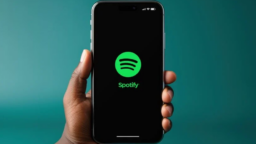It remains one of the most fiercely fought debates in music: How much does Spotify pay artists?
Today (March 18), the streaming company has made a bold move to answer the question once and for all.
Spotify has launched a new website – Loud & Clear – that provides a plethora of information for artists (and their representatives) looking for solid facts about the money Spotify distributes to musicians and the music industry.
One section of the site tells us the number of artists who have generated over $50k in payouts from Spotify (across records and publishing) annually since 2017.
It shows that, in 2020, some 13,400 acts generated total payments in excess of this magic figure around the world. That 13,400 number is nearly double the amount of artists who generated over $50k in payments from Spotify in 2017 (7,300).
One reason that this $50k figure is quite so important: According to the US Bureau of Labor Statistics (BLS), the median wage for workers in the United States in the first quarter of 2020 was $957 per week, or $49,764 per year.
It’s also worth remembering this isn’t consistent across the world. In Indonesia, to pick a random example, the average annual salary is around $10,000; in India and Brazil, it’s around $5,000.
Another important thing to consider here: Spotify is home to around a third of all paid music streaming subscriptions globally… which suggests that artists earning a certain amount on Spotify could double or even treble this figure when their income from all streaming platforms is taken into account.
The Loud & Clear site also shows the number of artists whose catalogs have generated over $100k per year on Spotify in the past four years, as well as over $500k per year, and over $1 million per year.
The $100k-plus-per-year club counted 7,800 members in 2020.
The $500k-plus-per-year club counted 1,820 artists in 2020.
And the $1 million-plus-per-year club counted 870 artists in 2020.



Much of the process of making music – and then making it commercially available – is, naturally, rooted in emotion. At the same time, there is a hangover from the pre-streaming era regarding what, statistically, constitutes different levels of success for artists.
What we’re getting at here: an artist with over a million streams on Spotify, for example, might feel entitled to a certain level of compensation in royalties.
And from a certain perspective that’s fair enough: a million is, in any context, a large number.
But how big is it really on Spotify in the modern age?
Perhaps the most surprising/useful data on the Loud & Clear website concerns this exact question, providing clarity on the space between how popular an artist’s numbers suggest they are – and how popular they really are in the context of the wider music marketplace.
So, how many tracks do you think there are on Spotify with over a million streams today?
The answer: 551,000. We didn’t add a zero there. Over half a million tracks, with over a million streams.
How many tracks have over 100,000 plays? A mind-blowing 2,710,000.
Loud & Clear enables artists to play with these numbers, as well as seeing how many artists on the platform have surpassed different milestones for monthly listeners. (Example: There were an average of 44,000 artists on Spotify in 2020 with more than 100k active monthly listeners.)


MBW has been quite careful through this article to talk about artists generating a certain level of payouts from Spotify, rather than receiving those payouts.
Obviously enough, that’s because Spotify doesn’t pay any artists direct (anymore). It only pays money out to intermediaries such as record labels, music publishers, distributors and PROs – whose own contractual terms with artists and songwriters are the source of a whole load more debate on what constitutes a “fair” deal in the music industry in 2021.
Adding significantly to that discussion, Loud & Clear sees Spotify respond directly to a number of pertinent questions – often heard from artists and the industry – on topics ranging from why it doesn’t raise its prices to the potential for a switch to user-generated royalties.
On price rises, Spotify notes: “Spotify is always evaluating pricing in each of our markets, and we’ve increased pricing in a number of them. Since Spotify and artists’ rights holders share in the same pool of money, our incentives are totally aligned: We both want to generate as much revenue from listeners and advertisers as possible.”
Reminding its audience of just how far Spotify and streaming have come since the service launched, the Loud & Clear site also confirms that, as of 2020, Spotify had paid over $23 billion in royalties to music rights holders — including over $5 billion in 2020 alone, up from $3.3 billion in 2017.Music Business Worldwide




